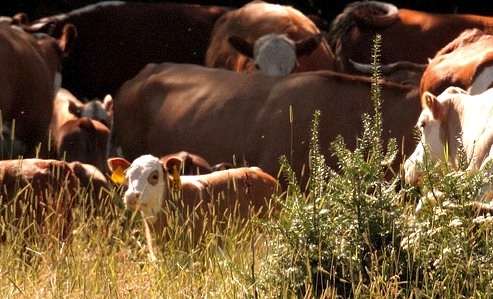Low-Cost Cow Calf Ranching Strategies

Image Credit: Sharon Mollerus, Flicker, CC BY 2.0
Low-cost cow calf producers consistently make money at the top AND at the bottom of the 10-year cattle cycle, during the good weather years AND during years when the weather is lousy.
And then there is everybody else... all the high-cost cow-calf producers who think they are geniuses when cattle prices are high and then turn to blaming the markets, the weather, and just about everybody else except themselves and their own cattle farming strategies when profits turn to losses during years when cattle prices are low or when the weather is less than perfect.
What separates the low-cost beef cattle producers from the high-cost cow-calf ranchers?
What strategies do low-cost cow-calf ranchers use that allow them to be profitable regardless of what the markets and the weather are like in any particular year?
In this four-part article I will explore these low-cost cattle farming strategies so you can join that elite group of beef cattle producers that remain profitable regardless of what the markets and the weather are doing!
Low Cost Calving Strategies
Most high-cost cow-calf producers simply choose their calving date based on when their neighbors calve and whether their calving date allows them to sell their calves in the same year they are born.
By contrast, low-cost cow-calf producers choose their calving date extremely carefully because they know that calving date affects more than just their beef cattle marketing strategy.
Calving date directly affects disease pressures, fertility rates, winter feed requirements, grazing techniques, labor requirements, and veterinary costs, just to name a few. And that in turn affects your cost to produce beef. In fact, calving date is the cornerstone - the hinge - of low-cost cow-calf production.
So what calving secret do low-cost cow calf producers know that everyone else is missing?
It's simple really. Pick a calving date that allows calves to be born when the weather is warm and dry, disease pressures are lowest, and pasture quality is optimum to maximize the quality and quantity of milk produced by the cow.
In seasonal climates (like Canada and most of the USA and Europe) this means calving in the summer, on pasture. In tropical climates, this means picking a calving date at the start of the growing season when pastures are lush and green.
To learn more about how to set up a summer calving program (and why a summer calving season is such a powerful tool to help keep production costs down), check out my article about the benefits of calving on pasture and my article about how to choose the perfect calving date. And when you're ready to make the switch, my article about calving on pasture explains how to manage a calving season on pasture, because it is very different than calving in a calving pen!
|
Page 1 / 4 |
Thumbnail Image Credit: Sharon Mollerus, Flicker, CC BY 2.0



